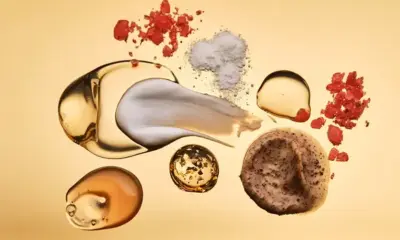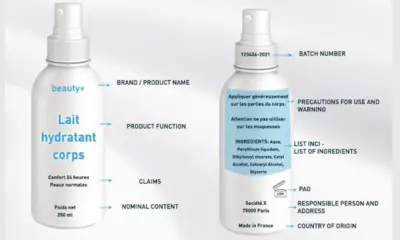Tech & Innovation
Nanotechnology Boosts Hyperpigmentation Treatments Amid Misinformation and Safety Concerns

Nanotechnology Enhances Skin Treatments: A Revolutionary Approach to Hyperpigmentation
Nanotechnology Enhances Skin Treatments by improving the stability, absorption, and effectiveness of common depigmentation active ingredients. Recent studies by Jordanian researchers have shown how nanotechnology can transform hyperpigmentation treatments. The research, published in Precision Nanomedicine, highlights how nanoemulsions and nano lipid carriers enhance the absorption of active ingredients, reducing irritation while improving their long-term efficacy.
How Nanotechnology Enhances Depigmentation Treatments
Nanotechnology has emerged as a game-changer in skin treatments, especially for addressing hyperpigmentation. By using advanced nanoformulations, common ingredients like hydroquinone, arbutin, kojic acid, and retinoic acid penetrate deeper into the skin, offering enhanced results. Nanotechnology Enhances Skin Treatments, ensuring these active ingredients remain effective at lower doses, which reduces irritation risks often associated with higher concentrations.
The study demonstrated how lipid nanoparticles, solid lipid nanoparticles (SLNs), and nanostructured lipid carriers (NLCs) improve the absorption and stability of these ingredients. These technologies also protect the active compounds from environmental factors like air and light, ensuring they stay potent for longer periods.
The Impact of Nanoformulations on Active Ingredients
The study found that SLNs carrying hydroquinone showed a more controlled release, resulting in improved absorption. Similarly, kojic acid encapsulated in NLCs exhibited stronger tyrosinase inhibition, which plays a crucial role in reducing pigmentation. Retinoic acid, delivered via nanocarriers, showed improved photostability, ensuring the active ingredient’s effectiveness even after exposure to light.
By using liposomal formulations, arbutin and azelaic acid were able to penetrate deeper into the skin, minimizing the risk of irritation. This approach not only improves treatment efficacy but also ensures a safer application process. Additionally, nanoemulsions helped stabilize vitamin C and niacinamide, allowing for long-lasting brightening benefits.
Social Media Misinformation and Consumer Safety
While nanotechnology holds great promise, Nanotechnology Enhances Skin Treatments, it also raises concerns about misinformation. In a separate study published in the Journal of Cosmetic Dermatology, US researchers analyzed popular TikTok videos tagged #hyperpigmentation. The study revealed that most hyperpigmentation content came from non-medical influencers rather than dermatologists.
These influencers often promoted over-the-counter treatments or DIY remedies that lacked scientific backing, which could lead to consumers misusing potent ingredients. The analysis pointed out that such videos received significantly higher engagement, despite being less reliable than content created by medical professionals. This discrepancy underscores the importance of accurate, science-based skin care advice.
The researchers emphasize the need for stronger collaboration between medical experts and content creators to ensure that consumers receive trustworthy and safe guidance. Proper education about how to use nanotechnology-based products is crucial to prevent misuse.
Nanotechnology’s Safety Concerns and Regulation Challenges
While Nanotechnology Enhances Skin Treatments, safety and regulation remain key concerns. Researchers point out that many nanoformulations still lack standardized safety assessments. Nanoparticles can behave differently based on their size, shape, and surface properties, making it difficult to ensure consistent formulations.
Furthermore, the long-term effects of nanoparticle penetration are not fully understood, especially when used repeatedly over time. The study also highlighted regulatory gaps, as different regions apply varying safety standards for nanomaterials. For instance, the EU enforces rigorous safety guidelines for new ingredients, while other regions like parts of Asia and North America have less uniform regulatory frameworks.
These gaps in regulation could pose risks for consumers, as nanoformulations must undergo thorough testing before they are deemed safe for widespread use. Until standardized safety assessments are established, the use of nanotechnology in skin treatments will continue to face challenges.
Conclusion: The Future of Nanotechnology in Skin Care
Nanotechnology Enhances Skin Treatments by improving the effectiveness and safety of depigmentation treatments. With its ability to enhance the absorption and stability of active ingredients, nanotechnology offers a more potent and controlled approach to skin care. However, for these advancements to be safely integrated into the market, standardized safety assessments and regulations must be established.
As consumers seek more effective and sustainable solutions for skin care, nanotechnology’s role in enhancing treatments will continue to grow. It is crucial for medical experts and content creators to collaborate, ensuring accurate information is shared about these powerful innovations.
Stay updated with the latest developments in skincare technology. Explore more cutting-edge news and research on our website today!





















